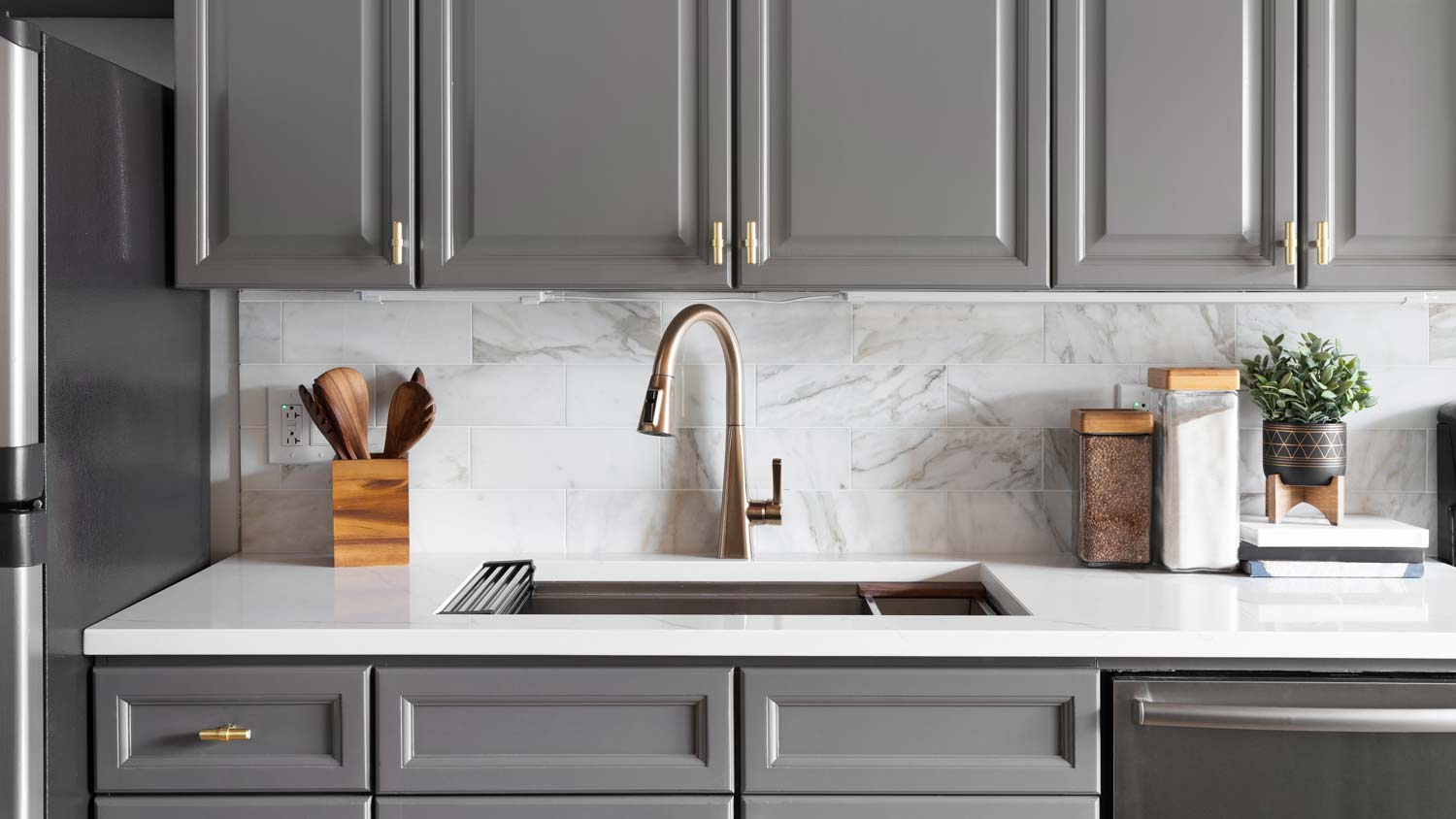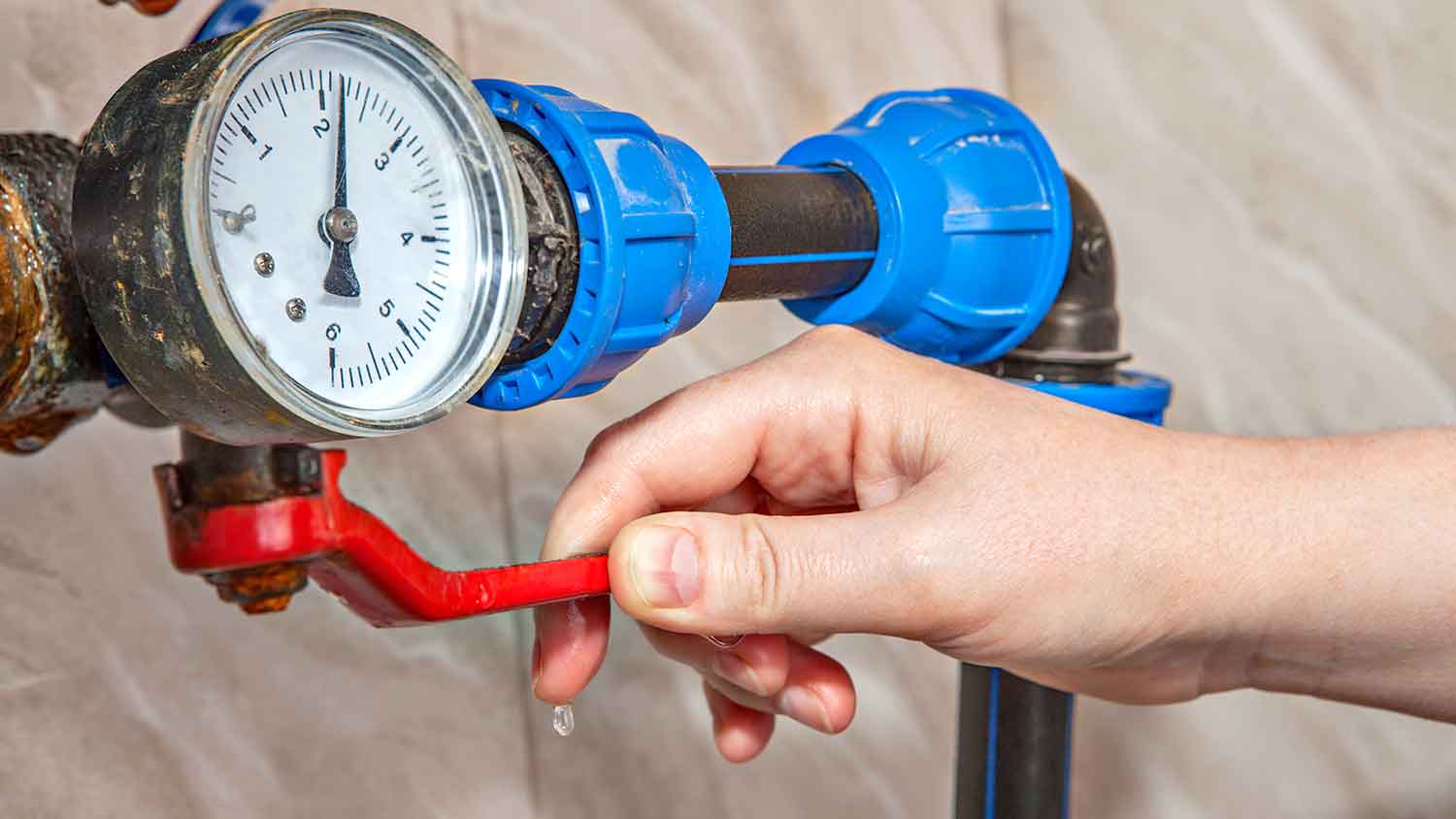
Budget for main sewer line clog repair costs based on factors such as cleaning method, sewer age, project complexity, permits, labor, and more.
Sewer line camera inspections cost an average of $1,000, but the cost can range anywhere from $100 to $6,000. The biggest cost factors are the length of the sewer line and how easy it is to access.


Sewer line camera inspections cost an average of $1,000, ranging between $270 and $1,732 for most homeowners.
The cost of your sewer line camera inspection depends on factors like camera type, sewer length, labor, and repairs.
This service will cost much more if your sewer line is difficult to access.
Annual inspections allow you to identify and fix problems before they escalate and cause significant problems for your household.
This article was created using automation technology and thoroughly fact-checked and edited by HomeAdvisor Editor Ryan Noonan.
On average, a sewer line camera inspection costs $1,000, with most homeowners spending between $270 and $1,732. Setting aside funds for this quick, high-tech service lets you spot hidden pipe problems before they turn into expensive repairs. A qualified pro brings the right camera gear and experience to deliver a clear diagnosis in a single visit.
The cost of a sewer line camera inspection can vary significantly depending on several factors. Here’s a closer look at how your total price breaks down.
The farther the camera has to travel, the more you can expect to pay. Because most homeowners don’t know exactly how many feet of pipe run under the house, your final bill may be higher than the estimate. Standard inspection cameras reach roughly 330 to 350 feet, so longer runs often require specialized equipment or an additional entry point.
A sewer inspection camera allows a professional to snake through hidden pipes and display real-time video of anything hiding under the floors or behind the walls. Because the footage is clear and immediate, the technology is also handy for pinpointing septic problems. Plumbers choose the camera style that best fits the job.
Digital Inspection Cameras: High-resolution, live digital scanning cameras can provide immediate recommendations for sewer repair or replacement. Plus, the camera can record all inspections to help predict possible future problems.
Snake Cameras: Snake cameras are a budget-friendly DIY option, but they only reach 20 feet, making them best suited for locating a simple obstruction near a fixture rather than diagnosing major line issues.
Rigid Borescopes: Rigid borescopes excel on straight pipe runs, offering sharp images in a tough, cost-effective package.
Drones: Specialized pipe-crawling drones capture high-quality video in tight areas, keeping crews out of harm’s way. However, the extra gear often pushes the price beyond what most homeowners need.
CCTV Cameras: A CCTV (closed-circuit television) camera is a small piece of equipment attached to a thin cable that allows a plumber to view a live video feed inside sewer pipes, pinpointing clogs or damaged areas.
Because this project relies almost entirely on professional expertise and specialized equipment, nearly the entire $998 average is allocated to labor. Most pros wrap up the job in roughly an hour. Costs drop when the technician can work through a cleanout instead of removing a toilet or vent stack. Keep in mind this price covers the inspection only; any repairs are extra.
Your local sewer scope inspector will likely do the following:
Access the line through an existing cleanout or fixture
Run the camera through the pipe to spot cracks, clogs, or other red flags
Compile a detailed written report after the inspection
Share the video file for your records
Walk you through the findings, costs, and recommended next steps
Expect the quote to climb if the technician has to snake through a hard-to-reach section, clear tree roots, or create a new access point.
When the video shows a problem, you’ll bring in a plumber, charging an average of $45 to $200 per hour, to clear a clog or repair a break. If you booked the inspection à la carte, these fixes are not included in the original quote.
Many plumbing experts recommend a sewer camera inspection every one to two years, even if you're not experiencing any problems. This proactive approach helps catch minor issues before they escalate into major, costly repairs. For newer homes with no plumbing issues, every 2 to 3 years might suffice.
Your location plays a big part in the cost of sewer line inspection. Here are the average prices across major cities to help you budget.
| Location | Average Cost |
|---|---|
| Pittsburgh, PA | $2,315 |
| Seattle, WA | $1,535 |
| Orlando, FL | $315 |
| New York City, NY | $510 |
| Houston, TX | $420 |
| Los Angeles, CA | $1,600 |
| Salt Lake City, UT | $460 |
| Hartford, CT | $380 |
You should consider more frequent inspections if any of the following apply:
Older Home: Older pipes, especially those made of clay or cast iron, are more susceptible to deterioration, cracks, and root intrusion.
Large Trees Near Sewer Lines: Tree roots often cause sewer line problems. Yearly or semi-annual inspections might be advisable if you have mature trees on your property, particularly near your sewer line.
History of Plumbing Issues: If you experience frequent clogs, slow drains, or sewage backups, regular inspections can help identify recurring problems and prevent future incidents.
Before Buying a New Home: Always get a sewer line inspection before purchasing a new home. This can reveal hidden problems that the previous owner might have been unaware of, saving you from inheriting expensive repairs.
After Major Renovations: If you've had significant plumbing work or renovations, a post-renovation inspection can ensure no accidental damage occurred.
Signs of a Problem: Don't wait for a scheduled inspection if you notice any of these signs:
Slow drains in multiple fixtures
Frequent clogs
Gurgling noises from drains or toilets
Unpleasant sewage odors
Wet spots or unusually lush patches of grass in your yard
Rodent infestations
Even though the inspection is relatively affordable, you can trim the bill by:
Bundling your sewer line inspection with related services like drain cleaning, pipe clearing, or sewer line repair
Booking your sewer inspection during off-peak days of the week, if possible
Keeping organized service records of previous repairs to save on unnecessary labor
Checking if your home warranty covers sewer line inspection and repair
No place is more important than your home, which is why HomeAdvisor connects homeowners with local pros to transform their houses into homes they love. To help homeowners prepare for their next project, HomeAdvisor provides readers with accurate cost data and follows strict editorial guidelines. We surveyed thousands of real customers about their project costs to develop the pricing data you see, so you can make the best decisions for you and your home. We pair this data with research from reputable sources, including the U.S. Bureau of Labor Statistics, academic journals, market studies, and interviews with industry experts—all to ensure our prices reflect real-world projects.
From average costs to expert advice, get all the answers you need to get your job done.

Budget for main sewer line clog repair costs based on factors such as cleaning method, sewer age, project complexity, permits, labor, and more.

Need to clean your drain? Here’s how much it costs, what factors affect cost, and what to expect.

Use this guide to budget for toilet repair costs based on factors such as problem type, replacement part prices, labor, and more.

Looking to remodel your shower? Here’s how much it costs, what factors affect cost, and what to expect.

Wondering who repairs undermount sinks? See when to call a countertop specialist or plumber, what to expect, and typical repair costs

Learn who to call for a water main break. See why a licensed plumber is best and what repairs cost so you can act fast